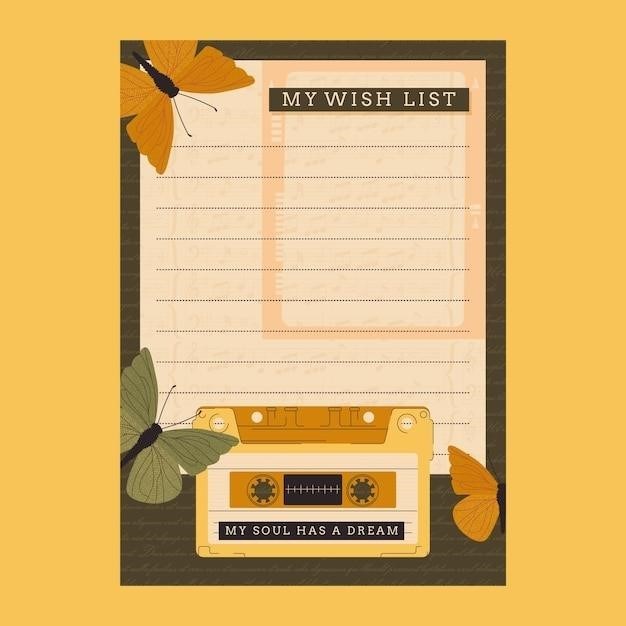Bloch Size Guide⁚ Understanding Hard Drive Performance
This guide explores the crucial role of block size in hard drive performance. Understanding block size, whether 512 bytes, 4KB, or larger, is vital for optimizing data storage and retrieval. Different file systems and applications have varying optimal block sizes impacting overall speed and efficiency.
Traditional Hard Drive Sector Sizes
The Impact of Block Size on HDD Performance
The choice of block size significantly influences hard drive performance. Smaller block sizes, like the traditional 512 bytes, allow for faster access to small files, as less data needs to be read or written for each operation. However, this comes at the cost of increased overhead due to the larger number of blocks required to store the same amount of data; Conversely, larger block sizes, such as 4KB, are more efficient for storing and retrieving large files, reducing the number of read/write operations and minimizing overhead. However, accessing small files becomes slower as more data needs to be processed. The optimal block size depends on the workload and file size distribution. Systems primarily dealing with large files benefit from larger block sizes, while those managing a mix of small and large files might experience better performance with smaller block sizes. Furthermore, the performance gains or losses associated with block size also depend on the interaction between the hard drive, the operating system’s file system, and the application’s I/O patterns. Proper alignment of block size with the operating system and application’s buffer sizes can further enhance performance, while misalignment can lead to significant performance degradation, particularly for write operations. Therefore, careful consideration must be given to the block size selection to optimize overall hard drive performance based on the specific application and data access patterns.
Optimal Block Size for Different File Types
The ideal block size varies considerably depending on the type of files being stored and accessed. For systems predominantly handling small files, such as databases with numerous small records or systems managing a large number of small documents, a smaller block size is generally preferable. This minimizes wasted space and improves read/write efficiency for individual files. Conversely, systems working with large files, like video editing software or those managing large datasets, are better suited to larger block sizes. This reduces the overhead associated with managing numerous small blocks and results in faster access times for large files. The choice also affects overall storage efficiency; larger block sizes might lead to wasted space if many small files are involved, while smaller blocks increase metadata overhead. Consider operating system limitations and file system characteristics. NTFS, for instance, typically uses default cluster sizes optimized for common file sizes on a given drive capacity. Choosing a block size that aligns with the file system’s cluster size enhances performance. Ultimately, the optimal block size is a trade-off between minimizing wasted space and maximizing access speed, directly influenced by the nature and size of the files being stored and accessed. Experimentation and performance benchmarking are often necessary to find the best setting for a particular application and workload.
SSD Block Sizes and Their Implications
Solid State Drives (SSDs) operate differently than traditional Hard Disk Drives (HDDs), impacting how block size considerations apply. While HDDs have a physical sector size (often 512 bytes or 4KB), SSDs utilize a larger physical block size, typically 512KB; This fundamental difference means that even though the operating system might request data in smaller units, the SSD will still operate in terms of its larger physical blocks. This has implications for performance, especially concerning write operations. Because SSDs erase data in blocks before writing new data, writing small files can lead to unnecessary erase/write cycles, potentially impacting lifespan and performance. Furthermore, file system alignment becomes crucial; if the file system’s allocation unit size (cluster size) doesn’t align with the SSD’s physical block size, performance can be significantly degraded, resulting in slower read and write speeds. Unlike HDDs where smaller block sizes might be advantageous for small files, SSD performance often benefits from larger allocation unit sizes, which reduces the number of erase/write cycles. However, excessively large allocation units can lead to wasted space with many small files. The optimal configuration depends on the workload and the SSD’s specific capabilities, often favoring larger allocation units for optimal performance and lifespan.
Choosing the Right Hard Drive Size for Your Needs
Selecting the appropriate hard drive capacity hinges on your specific storage requirements. While larger drives often boast faster performance due to technological advancements, the size itself isn’t the sole determinant of speed. For general use, a 500GB or 1TB hard drive typically suffices for storing files, documents, and applications; The marginal cost difference between these capacities often makes the 1TB option more attractive. However, consider your data storage needs. Users working with large files like high-resolution videos or extensive photo libraries might need considerably more storage, potentially opting for multi-terabyte drives. Gaming enthusiasts may similarly require substantial storage for multiple games. Factors beyond capacity also influence your choice, including the type of drive (HDD or SSD), interface speed (SATA, NVMe), and rotational speed (for HDDs). SSDs, while more expensive per gigabyte, offer significantly faster performance compared to HDDs. If speed is paramount, an SSD is preferable, even if it means a smaller storage capacity. Carefully assess your budget, required storage space, and performance needs before making a decision. The optimal hard drive size balances cost, capacity, and desired performance levels.
The Role of Allocation Unit Size (Cluster Size)
The allocation unit size, also known as cluster size or block size, significantly impacts hard drive efficiency. This setting determines the minimum amount of disk space allocated to a file, regardless of the file’s actual size. Smaller cluster sizes (e.g., 4KB) are advantageous when dealing with numerous small files, minimizing wasted space. However, they result in more metadata overhead, potentially slowing down performance due to the increased number of entries the file system must manage. Conversely, larger cluster sizes (e.g., 64KB or larger) are more efficient for storing large files, reducing the metadata burden and improving performance. However, this efficiency comes at the cost of wasted space when storing many small files, as each file still occupies at least one entire cluster. The optimal cluster size depends on the intended use of the drive. For operating system drives where numerous small files are common, a smaller cluster size is generally recommended, often the default NTFS value for a given drive size. Conversely, storage drives primarily holding large files, such as movies or large datasets, benefit from larger cluster sizes. The balance between space efficiency and performance must be carefully considered when choosing the allocation unit size.
Advanced Considerations⁚ RAID and Block Size Alignment
In RAID (Redundant Array of Independent Disks) configurations, aligning the block size with the RAID stripe size is critical for optimal performance. RAID systems combine multiple hard drives to improve performance and/or redundancy. A RAID stripe is the unit of data that is written across multiple drives. Misalignment between the block size and stripe size can lead to significant performance degradation, particularly for write operations. When a write operation is smaller than the stripe size, it may require multiple write operations to different drives, increasing overhead and slowing down the process. Similarly, if the block size is a multiple of the stripe size, the write operations can be more efficient. Therefore, choosing a block size that is a multiple of, or matches, the RAID stripe size is essential. This alignment ensures that data is written contiguously across the drives, improving write performance and reducing fragmentation. Failure to align these sizes can result in performance bottlenecks and severely impact the efficiency of the RAID array, especially in scenarios involving large-scale data transfers or frequent write operations. Proper alignment is a key factor in maximizing the benefits of a RAID system.
Heat-Assisted Magnetic Recording (HAMR) and Block Size
Heat-Assisted Magnetic Recording (HAMR) is a cutting-edge hard drive technology designed to increase storage density; Unlike traditional magnetic recording, HAMR uses a laser to heat a small area of the magnetic disk before writing data. This heating process allows for smaller magnetic domains, leading to a higher density of information. The implications of HAMR for block size are complex. While HAMR allows for smaller physical bits, the optimal logical block size for the operating system and file system might not directly correspond to this physical size. Efficient data transfer may require specific block sizes to optimize the interaction between the HAMR drive’s physical characteristics and the data access patterns of the operating system. Therefore, the optimal block size in a HAMR system is likely to be determined by a combination of factors including the physical limitations of the technology, the characteristics of the file system, and the performance requirements of applications. Further research and development in this area are needed to determine the most efficient block sizes for HAMR-based storage systems to fully exploit their increased storage density. The interplay between physical and logical block sizes will continue to be a key area of focus for researchers and developers working on HAMR technology.
Future Trends in Hard Drive Technology and Block Size
The future of hard drive technology and its relationship with block size is an area of ongoing evolution. Several promising technologies are emerging, each potentially influencing the optimal block size in different ways; For instance, advancements in heat-assisted magnetic recording (HAMR) and microwave-assisted magnetic recording (MAMR) continue to push the boundaries of storage density. These technologies could lead to even smaller physical bits, potentially requiring adjustments to the optimal logical block size for maximum efficiency. Beyond these recording technologies, the increasing prevalence of 3D-stacked storage architectures will also play a significant role. These architectures, which stack multiple layers of magnetic media vertically, may necessitate changes in how data is organized and accessed, impacting the choice of optimal block size. Furthermore, the continued development of novel materials and recording techniques, such as bit-patterned media recording (BPMR), could further shift the landscape. Determining optimal block sizes in these future systems will require sophisticated modeling and simulation, coupled with extensive empirical testing. The interaction between physical and logical block sizes will remain a critical factor in maximizing the performance of next-generation hard drives.

















